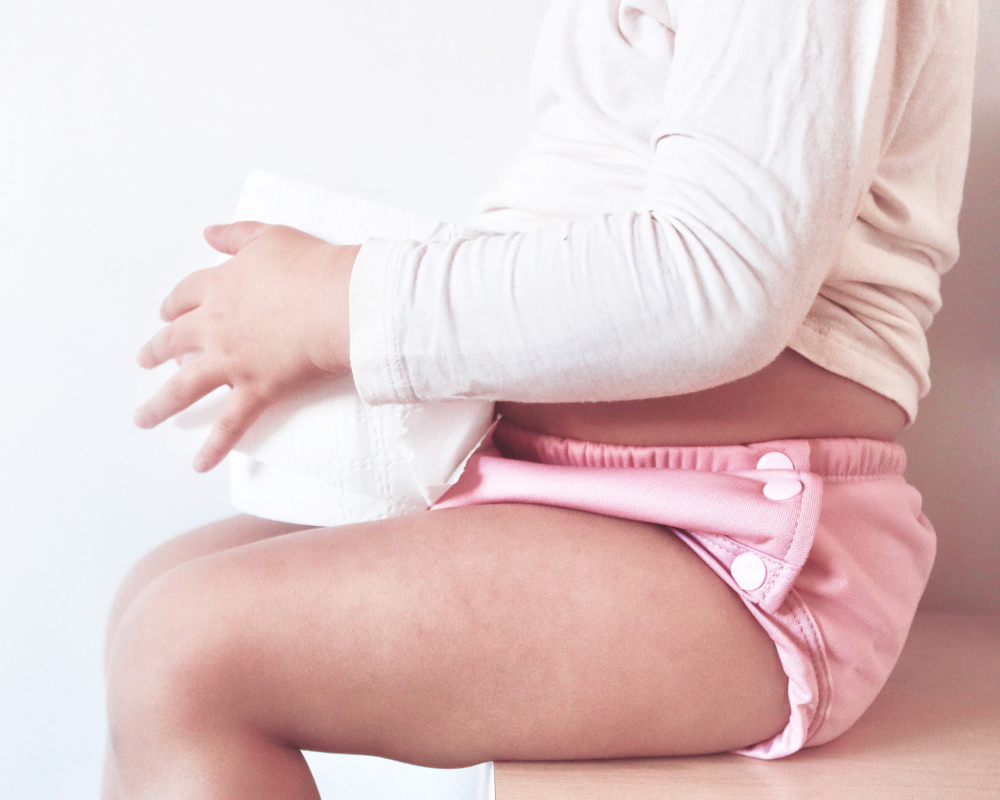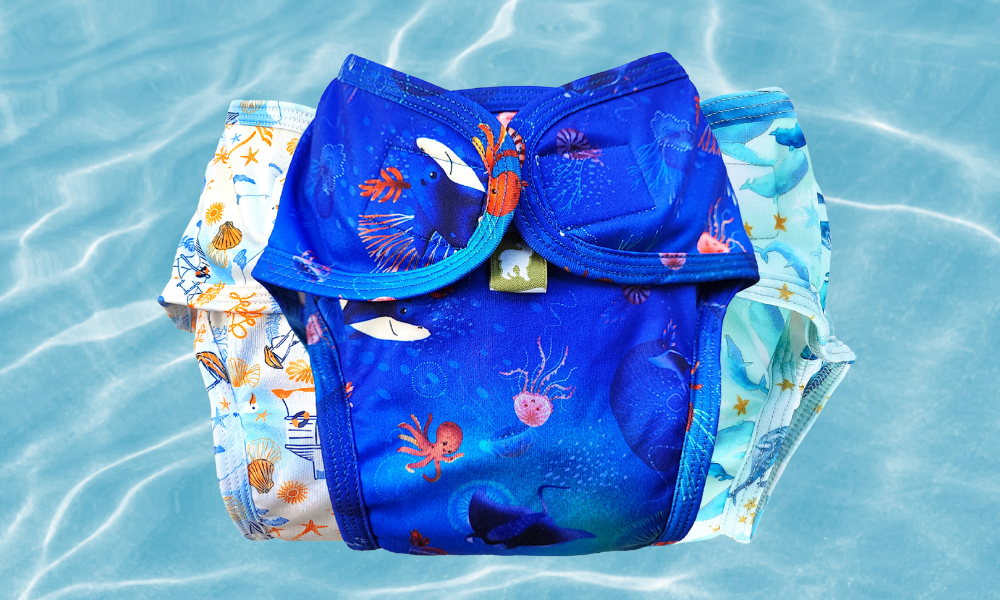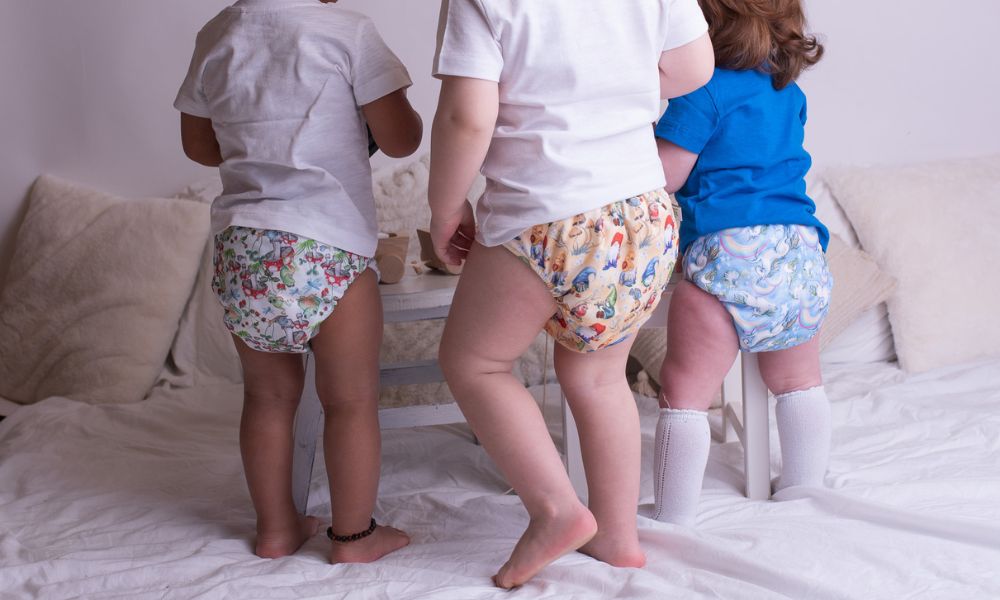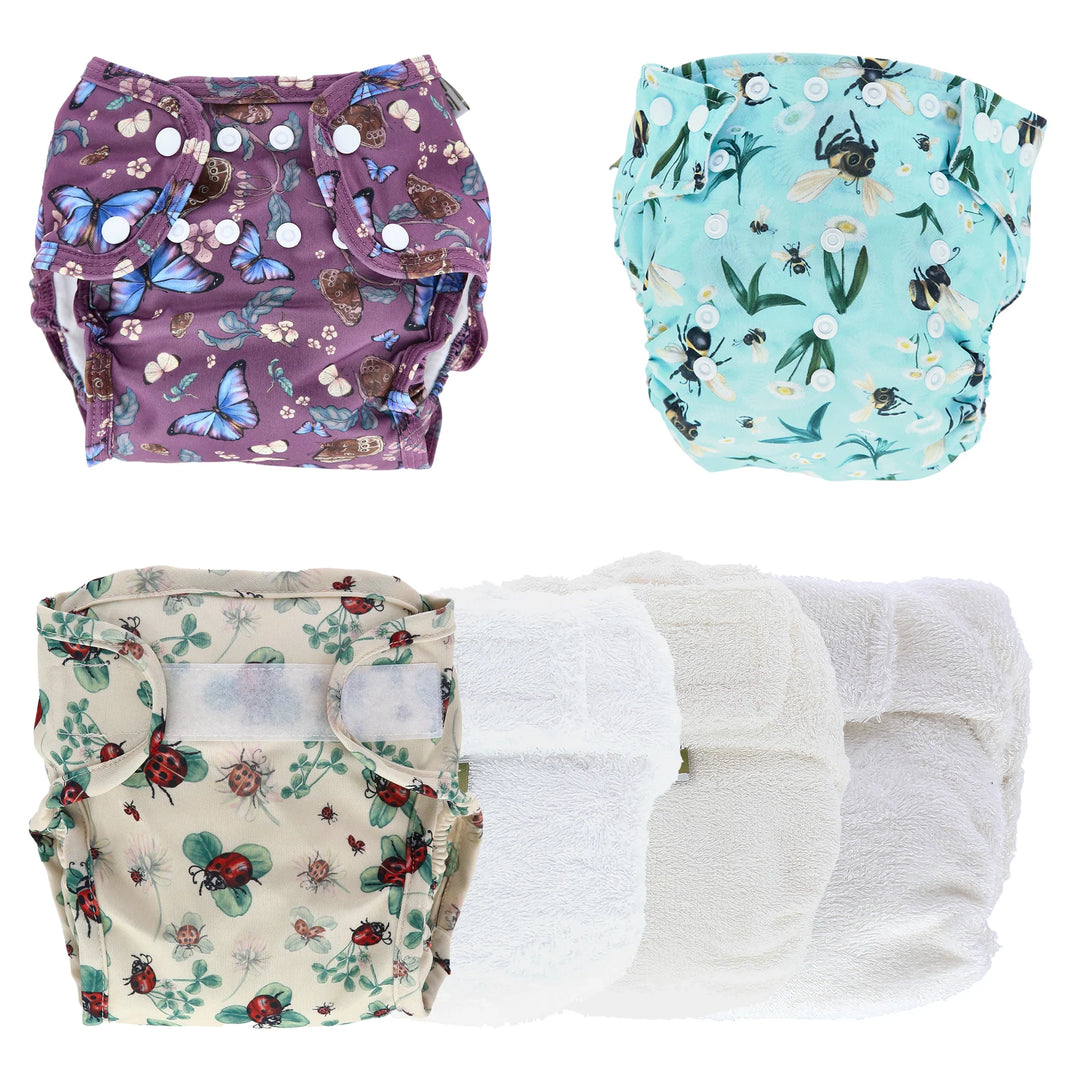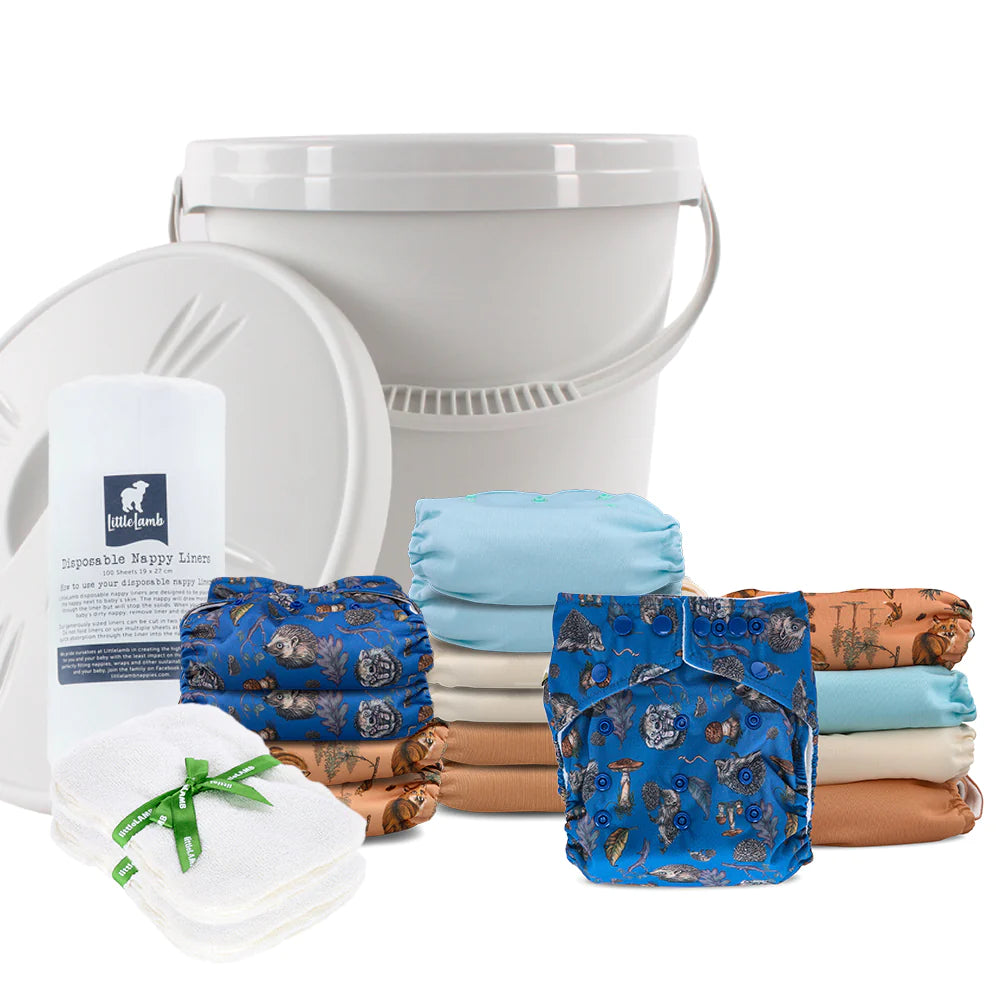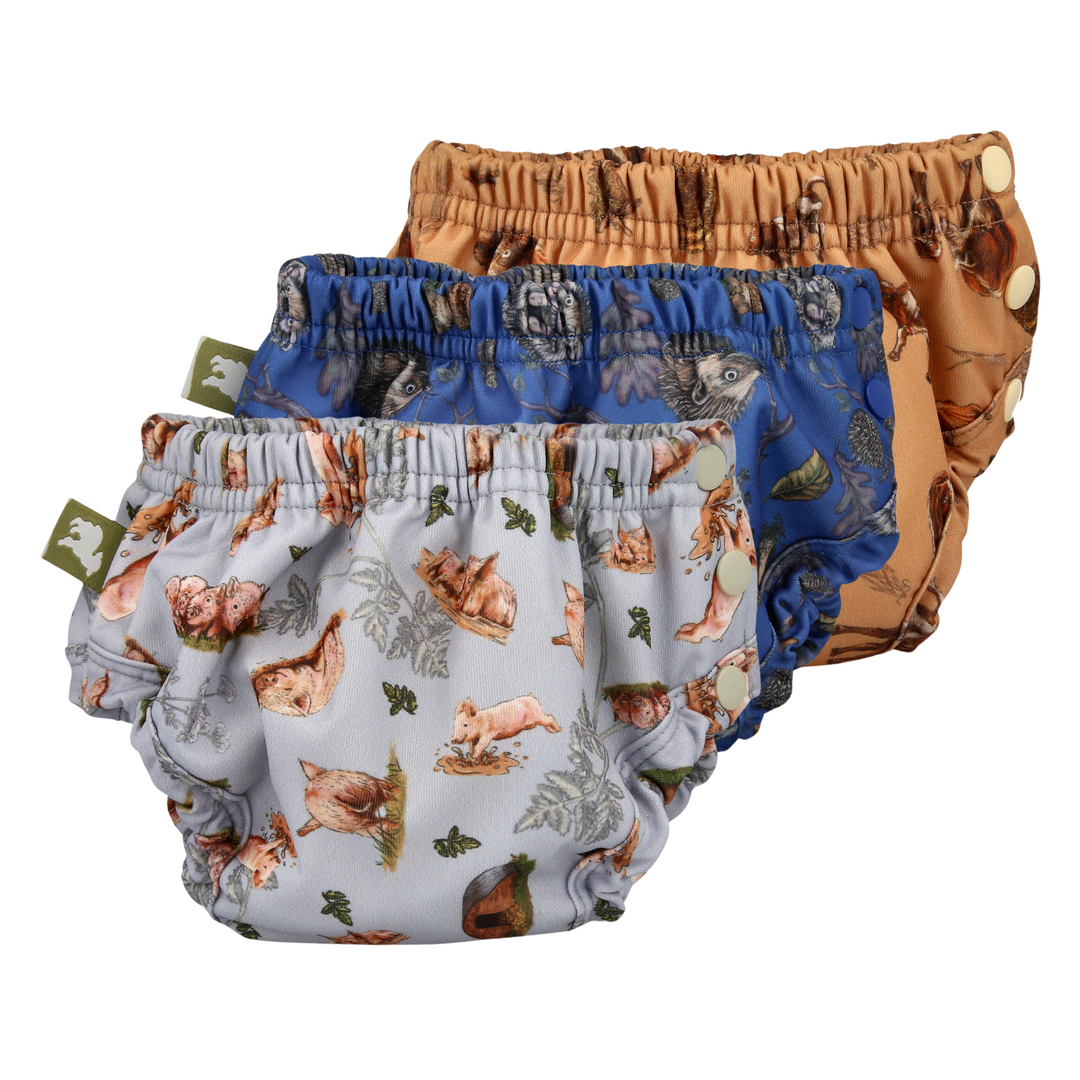
Types of Reusable Nappies & Finding Your Style
So, you've decided to use cloth nappies for your baby, great! As you'll have probably already discovered, cloth nappies are the environmental choice that can help save the planet and save your family money - win, win!
However, now comes the daunting decision of what cloth nappy system to use, and which brand to choose! As you are already reading this, we hope you are considering LittleLamb nappies. So, let us explain to you our different types of nappies and the easiest way you can try them all spoiler alert, we recommend buying our 'Try Them All Kit'.
Things to consider; different types of nappies, sized vs one-size options, closure options, whether the nappy will require an extra cover, fabric types, ease of use and finally, price. We've covered the basics of 4 main styles of cloth nappies, sharing pros and cons of each style.
1. Prefolds & Flats
This nappy type needs two parts: an absorbent inner layer and a waterproof 'wrap' or 'cover'. The inner layer is usually either a "flat" or a "prefold"—flats are just one large, flat piece of cotton cloth, while prefolds are rectangular and come already sewn with a thicker, more absorbent area down the middle. Both options require you to fold them into the desired shape, fasten on the baby and secure a wrap over the top. There are a few options for closure to fasten the nappy: Velcro (hook-and-loop), poppers (snaps for Americans) or nappy fasteners.
Pros:
These nappies are often the least expensive, simply because you can reuse the covers for multiple changes, and manufacturers' construction cost is very low. You will only change the absorbent layer each time your baby is wet, but you can reuse the waterproof wrap for a day or even two depending on the stage of your little one. Your collection only requires 4-6 covers and 20-24 prefolds/flats. This method is very versatile and easy to clean & dry.
Cons:
Preparing these diapers can be complicated; some have even referred to it as nappy origami. Each nappy requires you to fold them into shape for proper functionality and use both a fastener and a cover; all these bits and bobs make it a bit overwhelming for new parents. Additionally, although the upfront costs seem smaller, prefolds don't grow with the shape of your baby, requiring you to buy larger sizes at each stage. Not to mention they are often bulky, and although we love a fluff butt, packing these diapers for on the go can weigh a diaper bag down.
At LittleLamb, we do not sell prefolds or flats but we do sell Wraps that will work well with any prefold or flat nappy you choose. The double gusset on our wraps makes them a perfect and reliable partner!

2. Fitted Nappies
Fitted nappies consist of multiple layers of absorbent material, have leg and back elastic, and fasten on the baby with poppers (snaps) or Velcro (hook and loop closures). Fitted nappies are usually made of cotton, bamboo, hemp or fleece and are very absorbent–but not waterproof. Fitted diapers are hourglass-shaped, and you do not have to fold them yourself like with flats or prefolds, so they are ready-made to "fit" your baby's body. As with prefolds, you'll need about 24 fitted nappies and 4-6 wraps.
Pros:
This system is just like prefolds and is highly absorbent without the complicated folding method, saving you both time and frustration. Fitted nappies are, in our opinion, the most absorbent and reliable nappy system, so perfect for nighttime or heavy wetters.
Our LittleLamb fitted nappies are the original LittleLamb nappy, so we've been perfecting their design for over 20 years!
Cons:
As with prefolds, these nappies can be bulky, making it a challenge when travelling or packing your nappy bag. Also, each nappy is sized and requires that you buy a new set at each stage of baby's growth.
Fitted nappies must be used with a wrap or are not waterproof. Shop LittleLamb fitted nappies here.

3. Pocket Nappies
Pocket diapers are known as the "modern" cloth nappies as they are the first innovation in cloth diapering in years. The name 'pocket nappy' is because each nappy comes with a pocket that must be stuffed with an absorbent insert or booster. Pocket nappies are made of a waterproof outer with a "stay dry" polyester lining that acts as a pocket between the lining and the outside. This allows you to insert an absorbent pad or insert into the pocket. Most pocket nappies are lined in either fleece or suede cloth–which are stay-dry materials, meaning that your baby will still feel dry even when wet because the urine passes through the liner and absorbs into the insert that is inside the pocket.
Pros:
The pocket allows you to easily adjust the absorbency of the nappy to fit your needs; you can use a thin bamboo insert during the day for a sleeker look and add a couple of hemp inserts for overnight. Pockets are also super convenient for babysitters: after you've stuffed the insert, using a pocket diaper is exactly like putting on a disposable, with no folding or special instruction needed. With adjustable snap closures, you need to stock up on fewer diapers than other cloth methods as they will grow with your little one from a newborn to a toddler.
Cons:
As they mimic a disposable, they are a "one wear, one wash" style diaper. Unless using a disposable liner, pockets require more washing than other cloth diapers.
Shop LittleLamb pocket nappies here.

4. All-in-ones
- All-in-ones
All-in-ones include the entire nappy in a single piece as the name implies. They require no covers or stuffing and are most similar to disposable diapers. The waterproof layer, the absorbent layer, and the wicking layer are all sewn together.
Pros:
There's no stuffing, no folding and no confusion—just put it on and take it off. This means that using an all-in-one is every bit as simple as using a disposable, the only difference is you throw it in the laundry pile instead of the rubbish.
Cons:
AIO (All In One) nappies are the most expensive option for cloth nappies. Another critical disadvantage includes a longer drying time as you cannot remove the absorbency layer. This also requires a larger stock of nappies as the laundry time is increased. Also, because the absorbency layers and shell are already built together, it can be challenging to adjust absorbency levels for day and night use.
So, well done for making it to the bottom! Now where to go from here? We suggest you purchase our 'Try them all Kit' - this includes one of each of our nappy styles, all at a discounted price!





